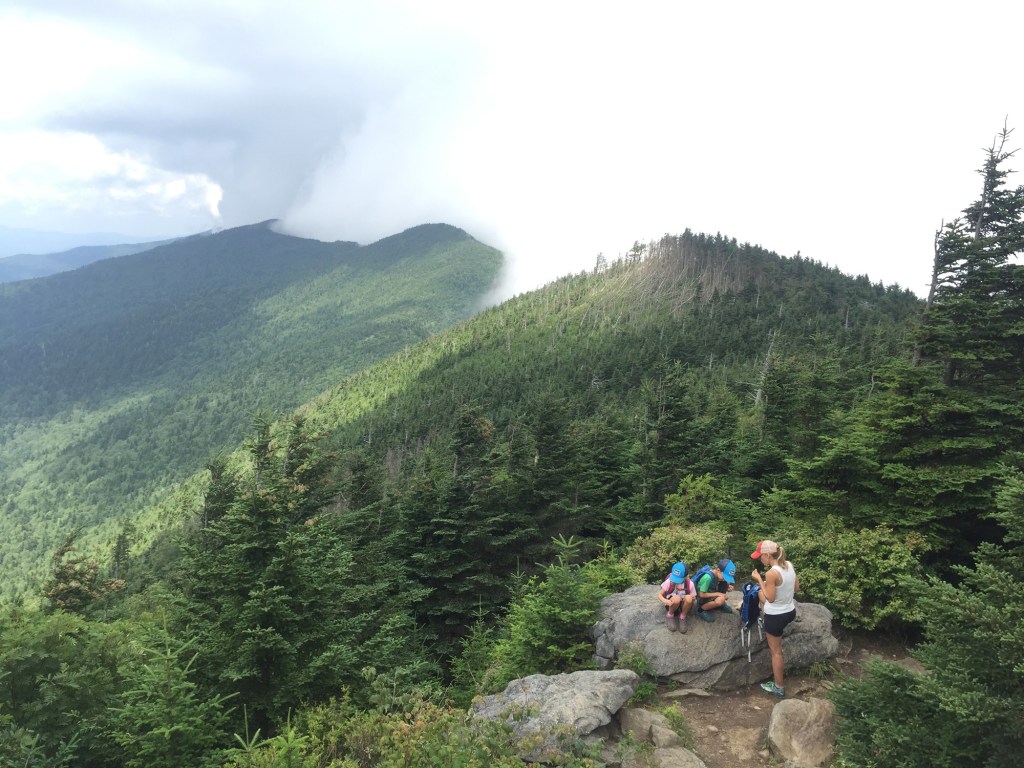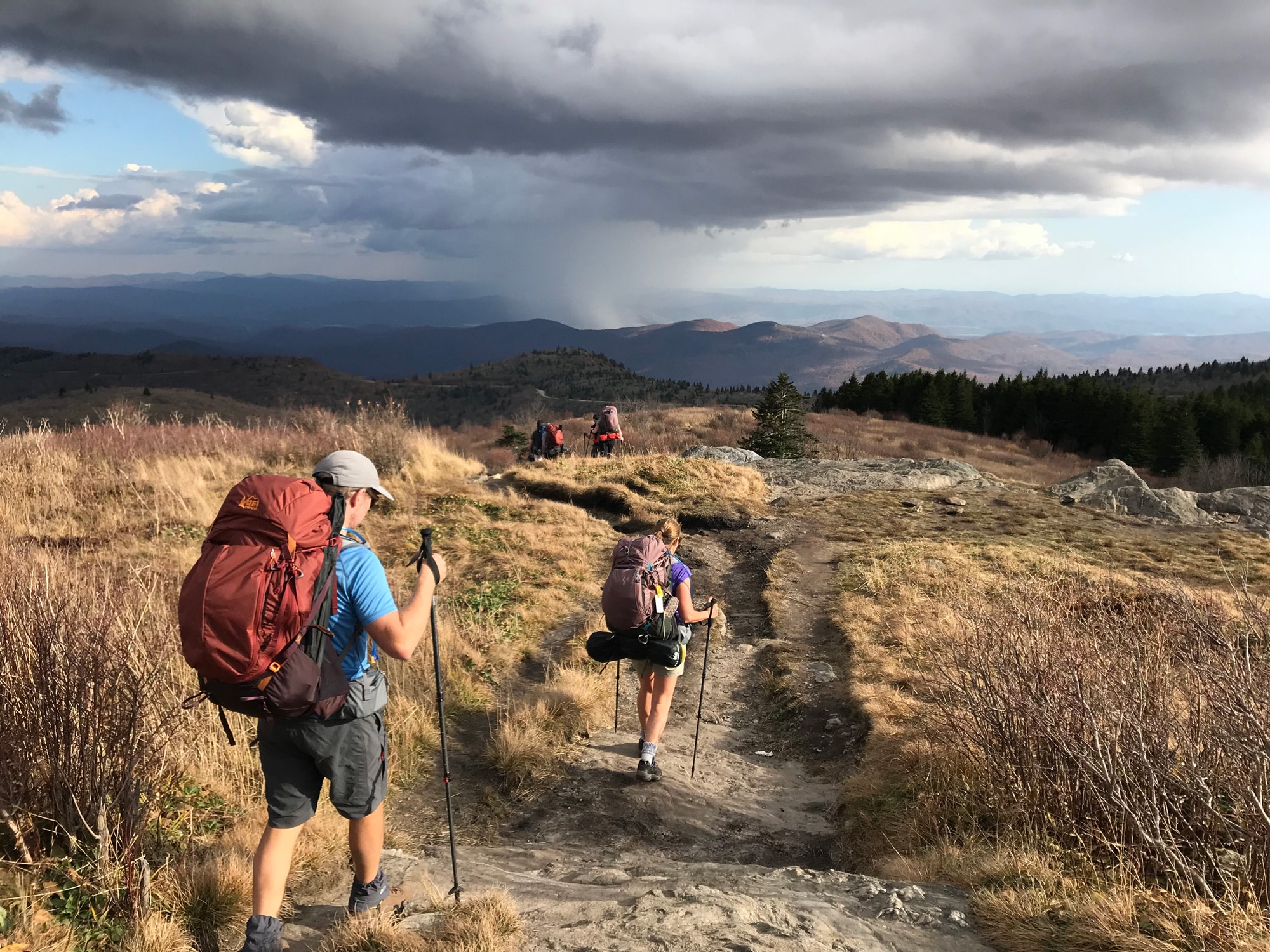Rebecca Trittipoe remembers crawling on her belly under a dense slope of rhododendron and thorns, desperately trying to move a few feet closer to the top of the mountain. The sun wasn’t up yet, and her GPS wasn’t working so she wasn’t sure exactly where she and her two running partners were, but she knew they needed to keep climbing in search of the peak.
That’s how it goes when you’re working your way through the South Beyond 6000, a hiking challenge that has participants trekking to the summits of 40 different 6,000-foot mountains in North Carolina and Tennessee. There are about a half-dozen hiking challenges in the Southern Appalachian Mountains, but the South Beyond 6000, or SB6K, is the most coveted, as it ticks off climbs to some of the tallest peaks on the Eastern Seaboard. It’s also one of the toughest hiking challenges in the Southeast, because 15 of those 40 peaks don’t have trails to the summits.
“You need to be a good map reader and know how to use your GPS,” said Trittipoe. “And be prepared to get beat up and be patient. You could spend hours working your way to some of these summits.”
The 40 different 6,000-foot peaks are scattered around six different mountain ranges near the western North Carolina-Tennessee state line. A little more than 200 people have completed the SB6K challenge since it was conceived in 1968, according to the Carolina Mountain Club, which organizes the challenge along with the Tennessee Eastman Hiking and Canoeing Club. Most athletes take months or even years to hike all of the mountains, but the fact that the peaks are located in close proximity to each other has prompted a few people to attempt a speed record by running all the SB6K peaks in succession.
Ted “Cave Dog” Kaizer set the original SB6K speed record, stringing the peaks together by running 260 miles in 4 days, 23 hours and 28 minutes in 2003. Trittipoe and her crew set the women’s speed record, running a total of 300 miles to complete the challenge in 6 days, 13 hours and 31 minutes in 2009. Matt Kirk, an Asheville-based trail runner, now owns the SB6K overall Fastest Known Time thanks to his run in 2010 (4 days, 14 hours and 38 minutes), but Trittipoe and company still hold the women’s record.

A few of the mountains on the South Beyond 6,000 tick list can be strung together as a single day hike, but most choose to knock out the peaks as single endeavors. Here, the author’s family takes a break on the way up Mount Mitchell. (Photo Credit: Graham Averill)
“The only speed records I have are of things people don’t want to do,” said Trittipoe, who also set a women’s speed record for the Allegheny Trail in West Virginia when she turned 50 in 2007. “I think if someone strong tried it, they could run it faster, but it would take a pretty good effort to break what we did.”
The only rule for attempting the speed record is that you have to connect all of the peaks on foot. You then need to submit documentation of your run to the Carolina Mountain Club and Fastest Known Time. Peter Barr, who manages the challenge for the Carolina Mountain Club, isn’t aware of a speed record attempt since Matt Kirk’s run in 2010. But most who tackle the challenge aren’t going for a speed record and aren’t connecting all of the peaks on foot.
A few of the mountains on the list can be strung together as a single day hike, but most people choose to knock out the peaks as single endeavors. Participants can pick their own route to the summit of each mountain, but you have to cover at least five miles on foot, with an ascent of at least 500 feet, for it to count toward the challenge.
Mount Mitchell (6,684 feet) is the most famous of the peaks on the list because it’s the tallest in the Eastern United States, but other standout mountains include Roan High Knob in the Roan-Unaka Mountains, Black Balsam along the Blue Ridge Parkway and Mount LeConte in Great Smoky Mountains National Park (GSMNP). Mark’s Knob, also in GSMNP, is widely considered the toughest summit because it requires a two-mile roundtrip bushwhack to reach the peak.
While there are only 200 or so hikers who have completed the challenge since its inception, the majority of those completions have come in the last 10 years, according to Barr.
“There’s an allure to getting to the top of a mountain in general,” he said. “Then there’s an extra desire to get to the top of the highest mountains. There aren’t many peaks above 6,000 feet in Southeast, so it’s attainable. It’s within the reach of a lot of hikers.”
Climb all 40 peaks and send a description of your ascents to the Carolina Mountain Club, and you can join the ranks of SB6K completers, and earn a patch from the hiking club. Just be prepared to get bitten by the peak-bagging bug.
“I did the SB6K in ’05,” Barr said. “It was the first peak-bagging challenge that I took on, and it totally got me addicted. It took me a year to complete the challenge. Three years later, I finished all of the 5,000-footers in Southeast. Next month, I’ll finish all the 4,000-footers in Eastern U.S. There are 790 of them. It’s been a 15-year project.”
Related articles:
